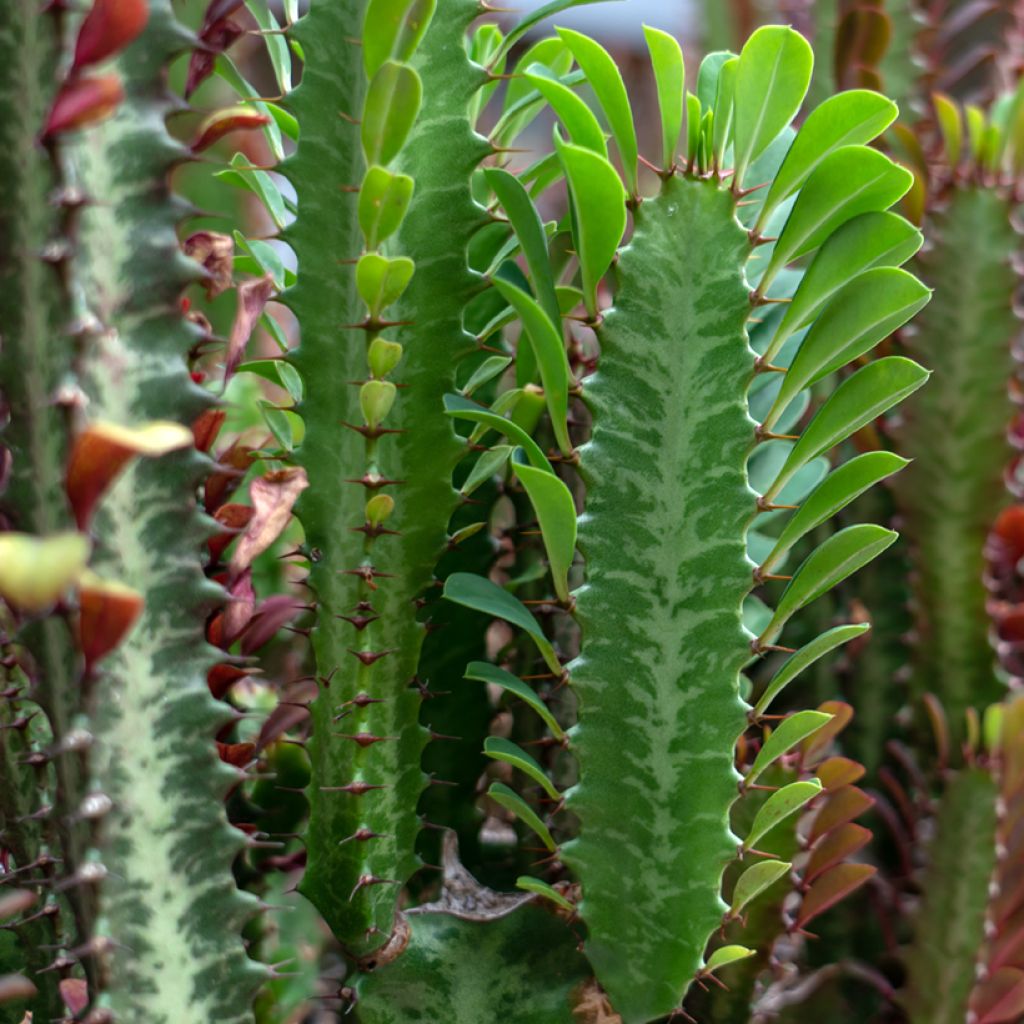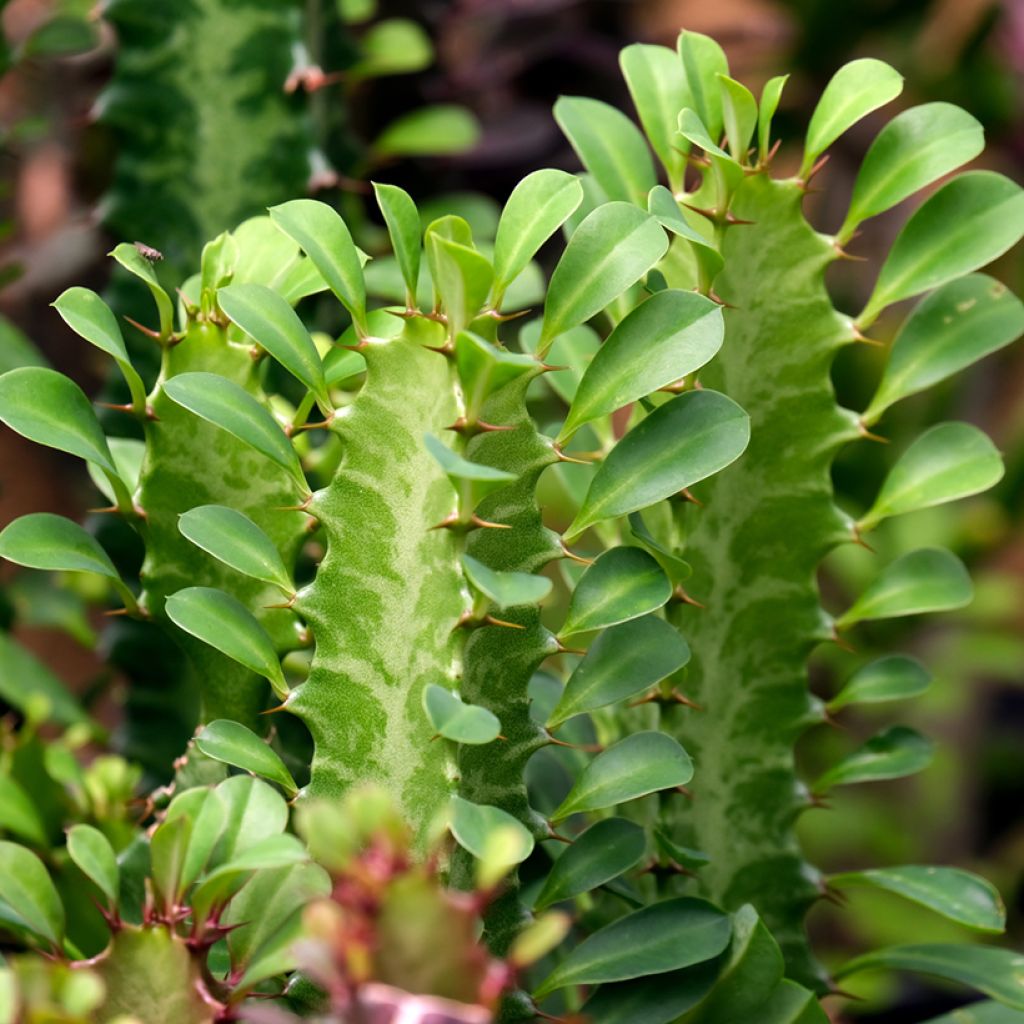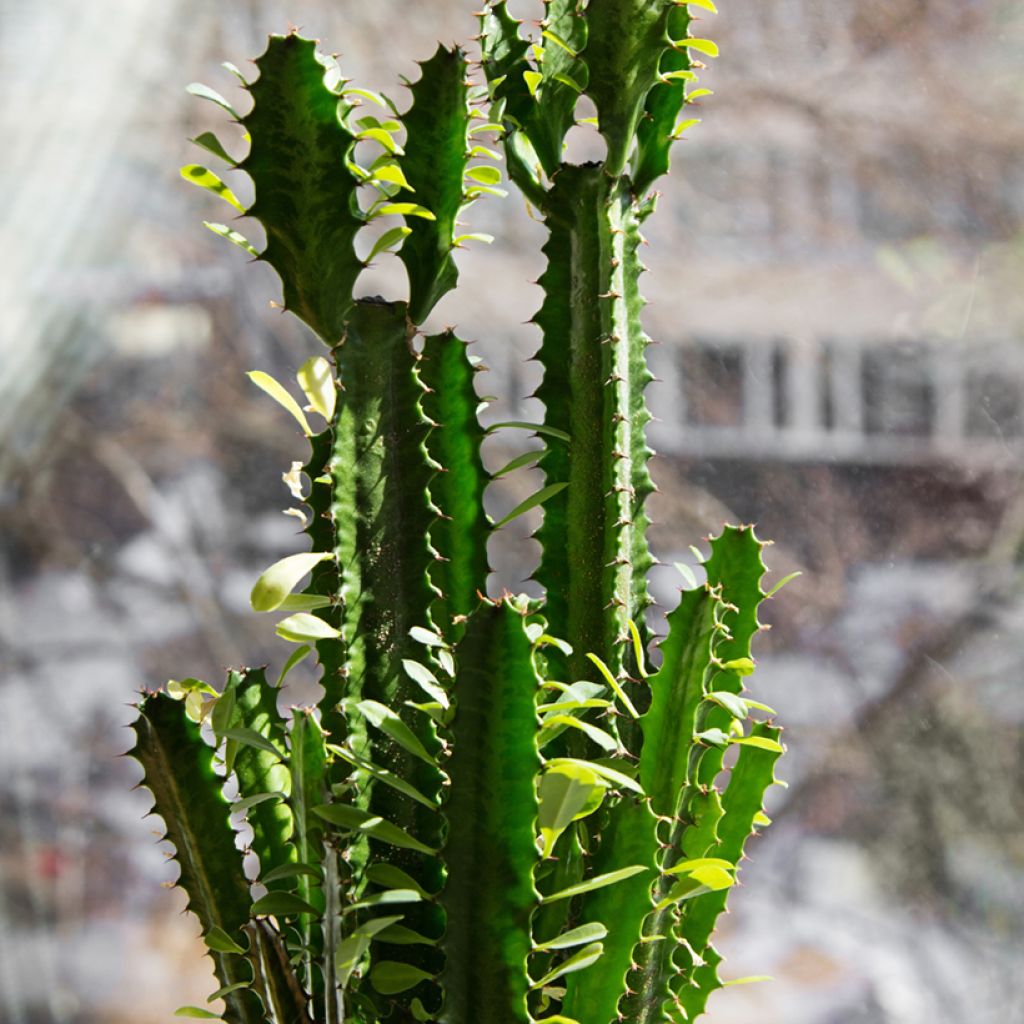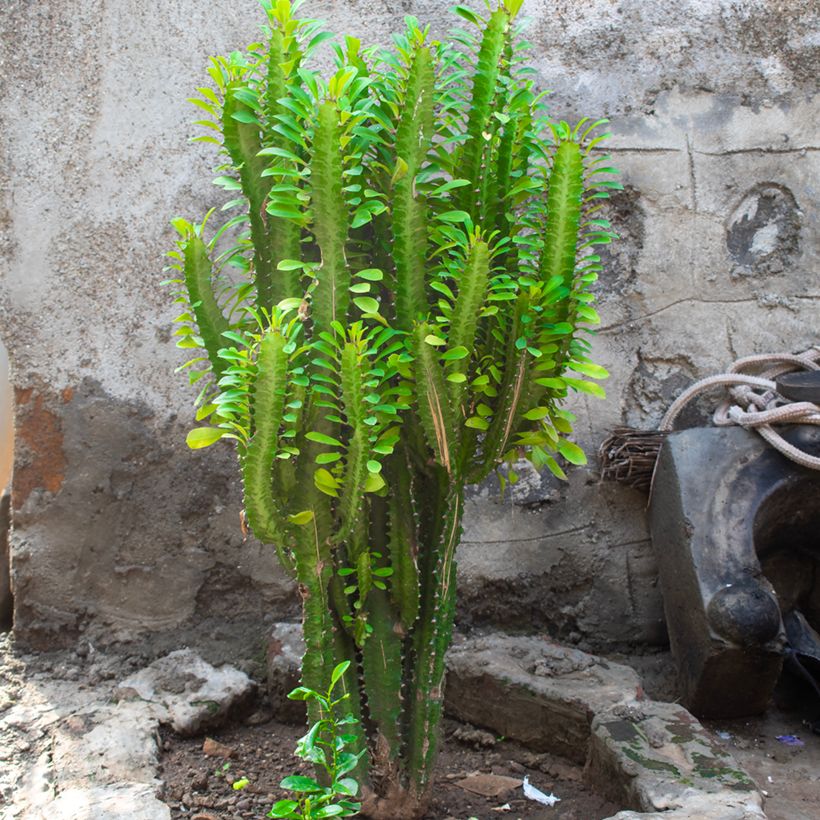

Euphorbia trigona - African milk tree


Euphorbia trigona - African milk tree


Euphorbia trigona - African milk tree


Euphorbia trigona - African milk tree


Euphorbia trigona - African milk tree
Euphorbia trigona - African milk tree
Euphorbia trigona
African milk tree, marble column
Special offer!
Receive a €20 voucher for any order over €90 (excluding delivery costs, credit notes, and plastic-free options)!
1- Add your favorite plants to your cart.
2- Once you have reached €90, confirm your order (you can even choose the delivery date!).
3- As soon as your order is shipped, you will receive an email containing your voucher code, valid for 3 months (90 days).
Your voucher is unique and can only be used once, for any order with a minimum value of €20, excluding delivery costs.
Can be combined with other current offers, non-divisible and non-refundable.
This plant carries a 30 days recovery warranty
More information
We guarantee the quality of our plants for a full growing cycle, and will replace at our expense any plant that fails to recover under normal climatic and planting conditions.
Description
Euphorbia trigona, commonly known as the African milk tree, is a popular houseplant prized for its candelabra-like silhouette and easy care. Its small, teardrop-shaped leaves scattered along its succulent stems add a delicate touch to its robust appearance. This euphorbia thrives in bright light, tolerates a few hours of direct sunlight, and requires minimal watering. It makes a striking statement in a contemporary or minimalist living room or office.
Euphorbia trigona, sometimes nicknamed the African milk tree, belongs to the Euphorbiaceae family. It is also encountered under the botanical synonym Euphorbia hermentiana. This shrubby succulent plant features upright, fleshy, and branched stems, typically with three ribs (occasionally four) and prominent ridges. The dark green stems are adorned with lighter "V"-shaped patterns, giving them a marbled appearance. Small reddish-brown thorns, measuring 2 to 4 mm, grow in pairs along the ridges. Between these thorns are spatulate, 3 to 5 cm long leaves. These leaves may persist for a long time on the plant if temperature and watering conditions are suitable. Indoors, Euphorbia trigona typically reaches a maximum height of around 1.8 m. Its spread depends on the space available. Native to Central Africa, particularly from Gabon to Malawi, Euphorbia trigona is adapted to warm, dry to semi-arid environments. In its natural habitat, it thrives in areas with pronounced dry seasons, forming dense bushes.
Indoors, it is essential to place Euphorbia trigona in a spot with bright light, ideally with a few hours of direct sunlight. It tolerates a wide range of temperatures but prefers conditions between 15 and 24 °C. A well-draining substrate is essential to prevent root rot; a specialised cactus and succulent mix is recommended. Watering should be moderate: allow the soil to dry out completely between waterings, reducing frequency during winter. Average ambient humidity is sufficient, and misting is unnecessary.
Like many euphorbias, Euphorbia trigona produces a toxic milky sap. This sap can cause skin irritation and mucous membrane inflammation upon contact. It is therefore advisable to handle the plant with gloves and keep it away from children and pets. Euphorbia trigona is not hardy and cannot tolerate temperatures below 0 °C, so it must be grown indoors or in a heated greenhouse in temperate climates.
The African milk tree stands out as a centrepiece in modern or minimalist decor. Its sculptural habit pairs perfectly with terracotta or sleek ceramic pots placed on the floor to emphasise its height. Ideal for a bright living room, office, or conservatory, it thrives near a well-exposed window. Pair it with other cacti or succulent plants like Adenium and Baobabs. Avoid humid rooms like bathrooms, as its fleshy foliage prefers a dry, well-ventilated environment.
Report an error about the product description
Euphorbia trigona - African milk tree in pictures




Foliage
Plant habit
Botanical data
Euphorbia
trigona
Euphorbiaceae
African milk tree, marble column
Central Africa
Safety measures
atteintescutaneomuqueuses
Cette plante peut provoquer l'apparition de réactions cutanées indésirables, une atteinte des yeux, ou des difficultés respiratoires si elle est ingérée.
Ne la plantez pas là où de jeunes enfants peuvent évoluer. Evitez tout contact avec la peau: privilégiez l'emploi de gants pour la manipuler. En cas de contact, lavez-vous soigneusement les mains et rincez abondamment à l'eau la zone concernée. Lavez les vêtements entrés en contact. En cas de réaction cutanée, contactez votre médecin ou le centre antipoison le plus proche de chez vous. En cas d'atteinte étendue ou de difficultés respiratoires, appelez immédiatement le 15 ou le 112.Pensez à conserver l'étiquette de la plante, à la photographier ou à noter son nom, afin de faciliter le travail des professionnels de santé.
Davantage d'informations sur https://plantes-risque.info
Location
Location
Maintenance and care
Watering tips
Potting advice, substrates and fertilisers
Houseplant care
Disease and pest advice
Maintenance and care
This item has not been reviewed yet - be the first to leave a review about it.
Haven't found what you were looking for?
Hardiness is the lowest winter temperature a plant can endure without suffering serious damage or even dying. However, hardiness is affected by location (a sheltered area, such as a patio), protection (winter cover) and soil type (hardiness is improved by well-drained soil).

Photo Sharing Terms & Conditions
In order to encourage gardeners to interact and share their experiences, Promesse de fleurs offers various media enabling content to be uploaded onto its Site - in particular via the ‘Photo sharing’ module.
The User agrees to refrain from:
- Posting any content that is illegal, prejudicial, insulting, racist, inciteful to hatred, revisionist, contrary to public decency, that infringes on privacy or on the privacy rights of third parties, in particular the publicity rights of persons and goods, intellectual property rights, or the right to privacy.
- Submitting content on behalf of a third party;
- Impersonate the identity of a third party and/or publish any personal information about a third party;
In general, the User undertakes to refrain from any unethical behaviour.
All Content (in particular text, comments, files, images, photos, videos, creative works, etc.), which may be subject to property or intellectual property rights, image or other private rights, shall remain the property of the User, subject to the limited rights granted by the terms of the licence granted by Promesse de fleurs as stated below. Users are at liberty to publish or not to publish such Content on the Site, notably via the ‘Photo Sharing’ facility, and accept that this Content shall be made public and freely accessible, notably on the Internet.
Users further acknowledge, undertake to have ,and guarantee that they hold all necessary rights and permissions to publish such material on the Site, in particular with regard to the legislation in force pertaining to any privacy, property, intellectual property, image, or contractual rights, or rights of any other nature. By publishing such Content on the Site, Users acknowledge accepting full liability as publishers of the Content within the meaning of the law, and grant Promesse de fleurs, free of charge, an inclusive, worldwide licence for the said Content for the entire duration of its publication, including all reproduction, representation, up/downloading, displaying, performing, transmission, and storage rights.
Users also grant permission for their name to be linked to the Content and accept that this link may not always be made available.
By engaging in posting material, Users consent to their Content becoming automatically accessible on the Internet, in particular on other sites and/or blogs and/or web pages of the Promesse de fleurs site, including in particular social pages and the Promesse de fleurs catalogue.
Users may secure the removal of entrusted content free of charge by issuing a simple request via our contact form.
The flowering period indicated on our website applies to countries and regions located in USDA zone 8 (France, the United Kingdom, Ireland, the Netherlands, etc.)
It will vary according to where you live:
- In zones 9 to 10 (Italy, Spain, Greece, etc.), flowering will occur about 2 to 4 weeks earlier.
- In zones 6 to 7 (Germany, Poland, Slovenia, and lower mountainous regions), flowering will be delayed by 2 to 3 weeks.
- In zone 5 (Central Europe, Scandinavia), blooming will be delayed by 3 to 5 weeks.
In temperate climates, pruning of spring-flowering shrubs (forsythia, spireas, etc.) should be done just after flowering.
Pruning of summer-flowering shrubs (Indian Lilac, Perovskia, etc.) can be done in winter or spring.
In cold regions as well as with frost-sensitive plants, avoid pruning too early when severe frosts may still occur.
The planting period indicated on our website applies to countries and regions located in USDA zone 8 (France, United Kingdom, Ireland, Netherlands).
It will vary according to where you live:
- In Mediterranean zones (Marseille, Madrid, Milan, etc.), autumn and winter are the best planting periods.
- In continental zones (Strasbourg, Munich, Vienna, etc.), delay planting by 2 to 3 weeks in spring and bring it forward by 2 to 4 weeks in autumn.
- In mountainous regions (the Alps, Pyrenees, Carpathians, etc.), it is best to plant in late spring (May-June) or late summer (August-September).
The harvesting period indicated on our website applies to countries and regions in USDA zone 8 (France, England, Ireland, the Netherlands).
In colder areas (Scandinavia, Poland, Austria...) fruit and vegetable harvests are likely to be delayed by 3-4 weeks.
In warmer areas (Italy, Spain, Greece, etc.), harvesting will probably take place earlier, depending on weather conditions.
The sowing periods indicated on our website apply to countries and regions within USDA Zone 8 (France, UK, Ireland, Netherlands).
In colder areas (Scandinavia, Poland, Austria...), delay any outdoor sowing by 3-4 weeks, or sow under glass.
In warmer climes (Italy, Spain, Greece, etc.), bring outdoor sowing forward by a few weeks.





























